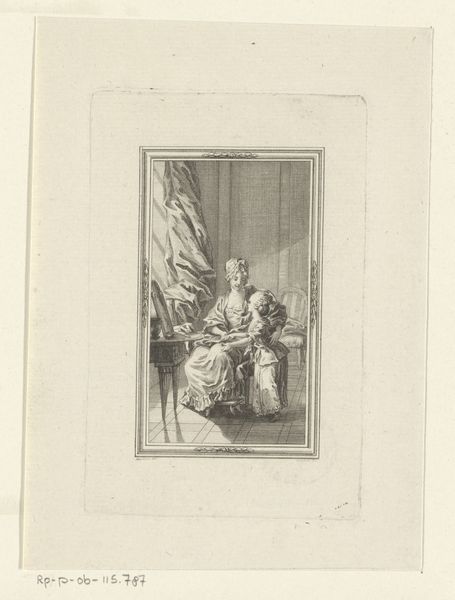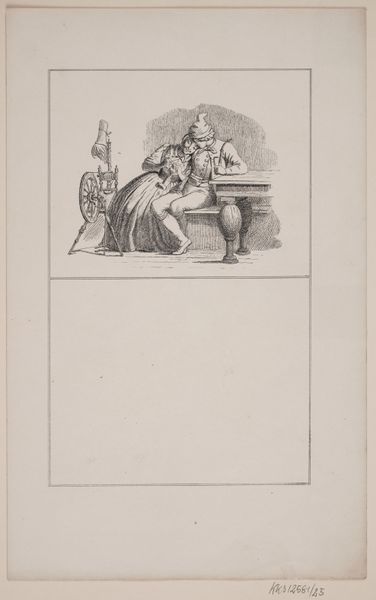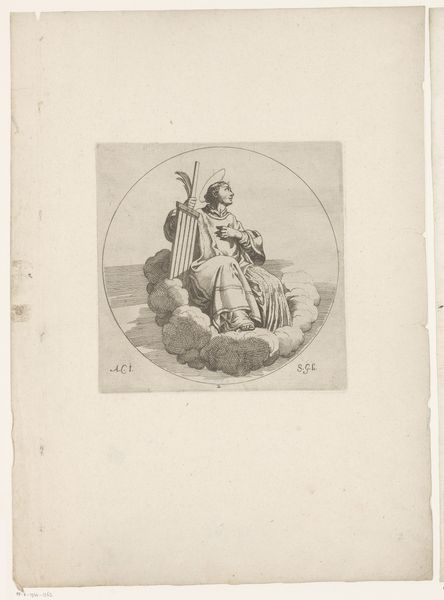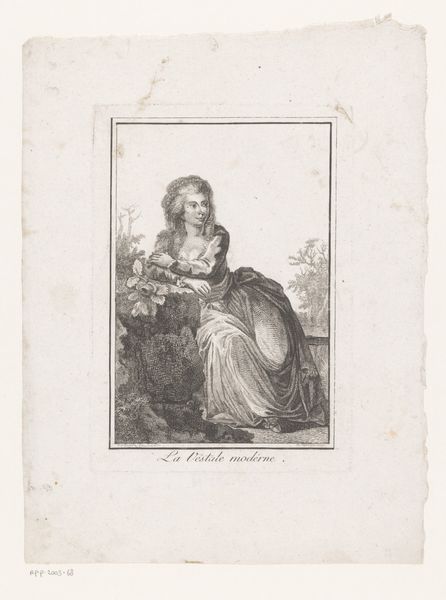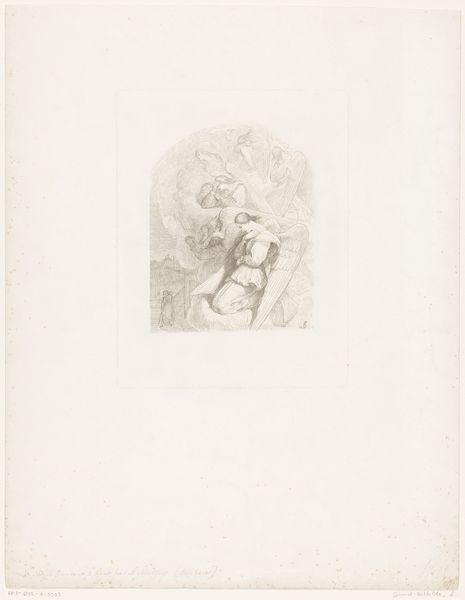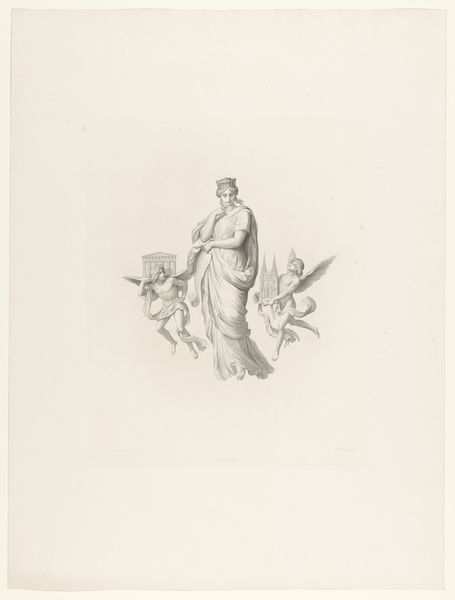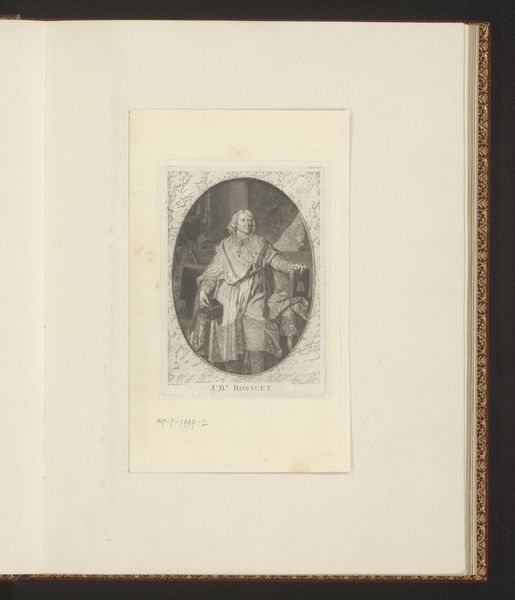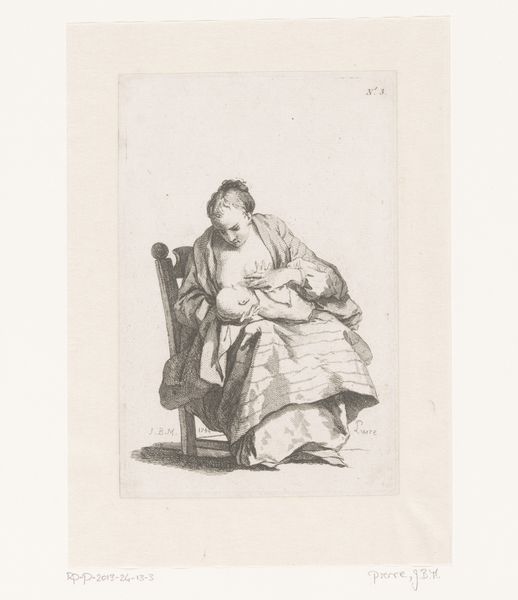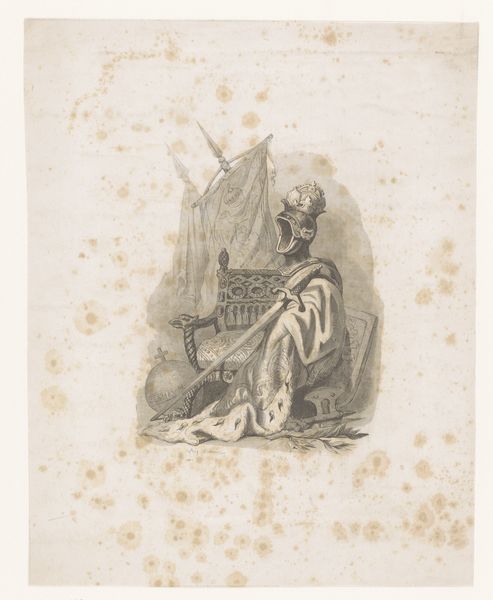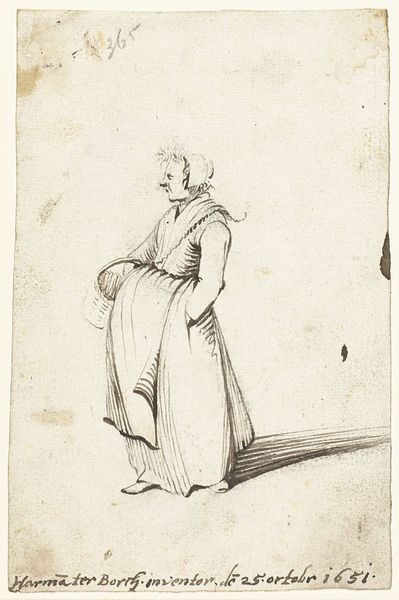
print, engraving
#
portrait
# print
#
old engraving style
#
figuration
#
personal sketchbook
#
sketchbook drawing
#
sketchbook art
#
engraving
Dimensions: height 493 mm, width 342 mm
Copyright: Rijks Museum: Open Domain
Curator: This is Willem Hendrik Franquinet's "Maria met kind aan de borst," an engraving made sometime between 1809 and 1854. Editor: The delicate linework gives it a fragile, almost ephemeral quality. The figures seem to float on the page, a moment captured and preserved, but barely there. Curator: Considering Franquinet’s access to materials, what strikes you about this engraving? How did the process shape its aesthetic, especially within the social norms dictating image production? Editor: I see the work not only through a lens of art history but also gender dynamics. It highlights the Madonna and Child theme, central to patriarchal religious systems that celebrate motherhood while simultaneously controlling female bodies and sexuality. Curator: The controlled lines allowed for reproducibility. Given its theme, I wonder if Franquinet aimed for broader accessibility among a diverse, perhaps even less wealthy, populace, rather than targeting the traditional art patronage networks. Editor: Possibly, and such wide distribution speaks volumes about the cultural imperative to idealize maternal love, placing women in very specific and constrained social roles. Consider the contrast between this serene image and the lived realities of many mothers during that period, particularly those facing poverty, illness, or lack of agency. Curator: It's important to consider who benefits from these depictions of motherhood and to what ends this image could have been reproduced, consumed, and commodified in its own time. Editor: Absolutely, images like these not only reflect but also construct and reinforce social ideologies. It is through this close analysis of image making, and their cultural footprint, that we understand their historical importance. Curator: It does open up broader conversations regarding who has the power to represent these sensitive themes and how materials can affect dissemination and social perception. Editor: Exactly. Seeing "Maria met kind aan de borst" allows one to re-evaluate its symbolic value through a modern socio-political conscience.
Comments
No comments
Be the first to comment and join the conversation on the ultimate creative platform.
